Off at dawn, the first stop was an empty view point parking lot with the early morning sun lighting the persistent “vog” (volcanic smog). The sound of morning birds filled the forest. Most tourists miss these early morning sights and sounds. They have to have breakfast, first.
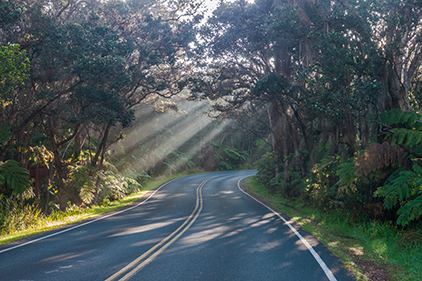
Dawn light playing through the trees and illuminating the pervasive “vog” from Kīlauea’s continuous emissions.
Morning sounds of birds near the Kīlauea Iki Crater.
Several Kalij pheasants were in the parking lot fussing about this and that. These attractive birds, native to the Himalayan foothills, were introduced to Hawaii in 1962 as game birds.
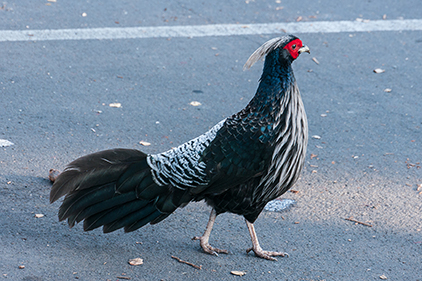
A native of the Himalayas, the Kalij pheasant has adapted well to Hawaii Volcanoes National Park.
Some Kalij Pheasants in a heated discussion about something.
The Chain of Craters Road has led a rough life, in geologic terms. It routes along the top of Kīlauea’s East Rift Zone and then descends off the Hōlei Pali down to the sea cliffs. The East Rift Zone is the source of frequent lava eruptions and lava flows down to the ocean. When a lava flow reaches the road, it does not look both ways before crossing but just keeps flowing on, covering the road in many feet of new lava rock. Some time later, the Park will create a new road bed on the cooled lava.
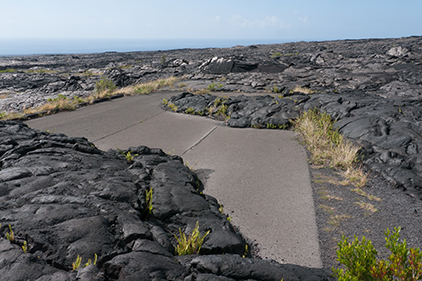
Part of a portion of the old lava-covered Chain of Craters Road still visible.
By mid-morning there is another sound competing with the birds—tourist helicopters. If it weren’t for the noise imposed on those on the ground, I would have loved such a flight. But, having experienced it from the ground, I did not want to be a party to messing up someone else’s enjoyment on the ground.
The ongoing Kīlauea eruption series has covered long stretches of Chain of Craters Road, over the years. The road zig-zags over the 1969–74 lava flows from Mauna Ulu. The drive down is a fascinating exploration of the many forms, textures, and colors of Hawaiian lava.
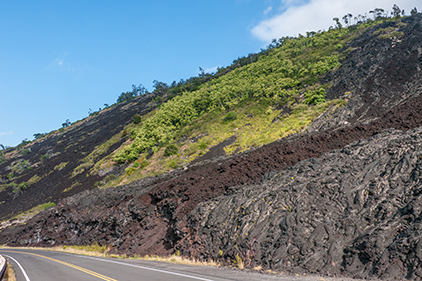
The dark reddish black lava is called a’a. The greyer lava with a sheen is called pahoehoe. The green patch is a kipuka, a section of vegetation that the lava flow did not over run.
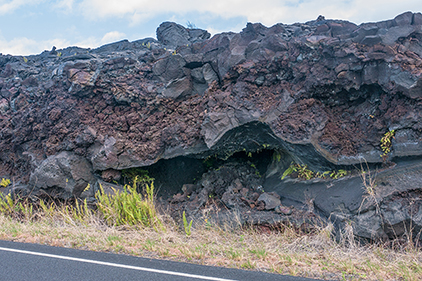
An easy way of seeing what is beneath the ground surface is make use of road cuts. Professional geologists are grateful for road builders for these cuts. One can see the alternating layers of pahoehoe and a’a.
In Hawaii, there are two basic forms of lava: pahoehoe, which is fluid, somewhat reminiscent of thin cake batter, and hardens into what is called a “ropey” surface texture, and a’a (with a glottal stop at the apostrophe), is descrived as clinkery, very rough, shard rocks—VERY difficult to walk over.
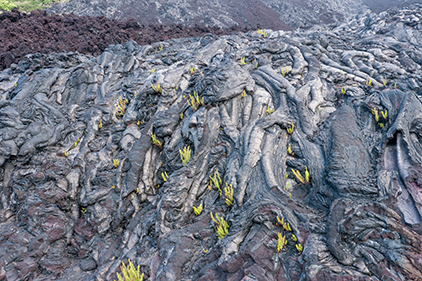
This type of pahoehoe lava is called entrail pahoehoe.
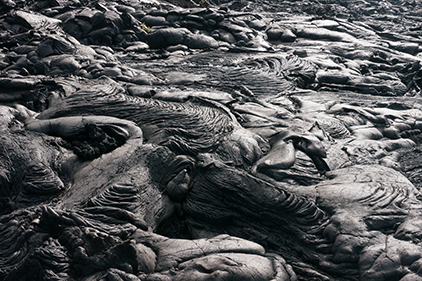
Pahoehoe.
Pahoehoe is by far the more interesting lava rock (to me), since it hardens in a wild variety of textures and forms with colors, as the accompanying photos show. Most of the new lava pictures were taken near the Alanui Kahiko turnout (the University of Hawaii’s Map of Hawaii, the Big Island, has LOTS of place names, even for turnouts.) Road cuts reveal some of what is below the surface. It was a fun afternoon “geeking” out on lava rocks.
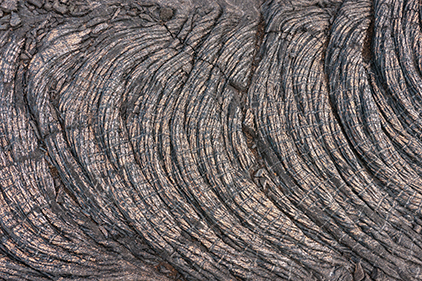
A few photos of pahoehoe lava. This lava is somewhat glass-like on its surface. The blue color is due to the chemical makeup of the glass-like surface of some of the pahoehoe.
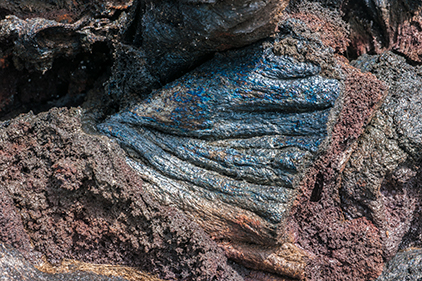
As pahoehoe lava ages, the surface oxidizes and reddens, yet the original forms are still very evident. The Hilina Pali Road provided views of older pahoehoe lava. The oxidized color was reminiscent of Southwestern US desert sandstone. But the pahoehoe lava flow features were very evident.
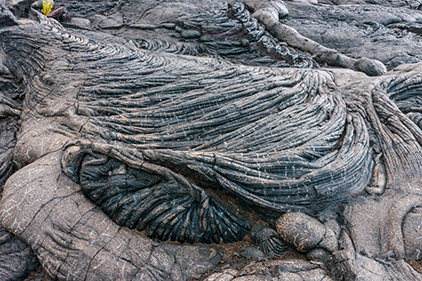
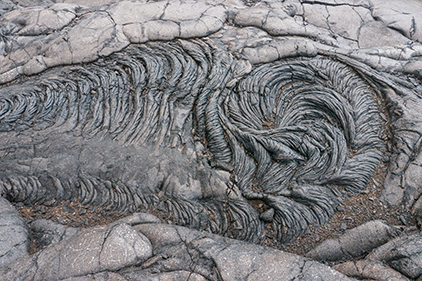
The Chain of Craters Road currently ends at the Hōlei Sea Arch. The road used to continue on to Pahoa, but the Kīlauea East Rift Zone lava flows have buried long stretches. The park is reopening a rough road as an alternate route should the lava flow stalled above Pahoa resume downward movement, possibly cutting the road to Hilo.
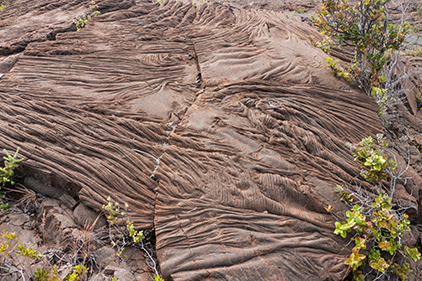
Older pahoehoe. Pahoehoe turns a reddish color as it ages.
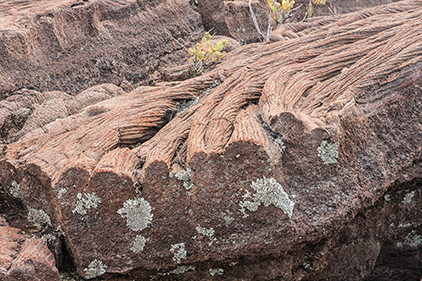
Finally, at the Sea Arch, three nene (the native Hawaiian goose) posed for a picture.
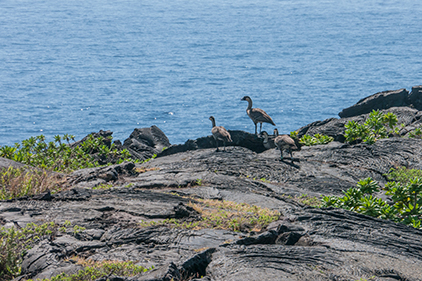
Hawaii’s native goose, the nene. Its feet are adapted to walking on the lava flows.
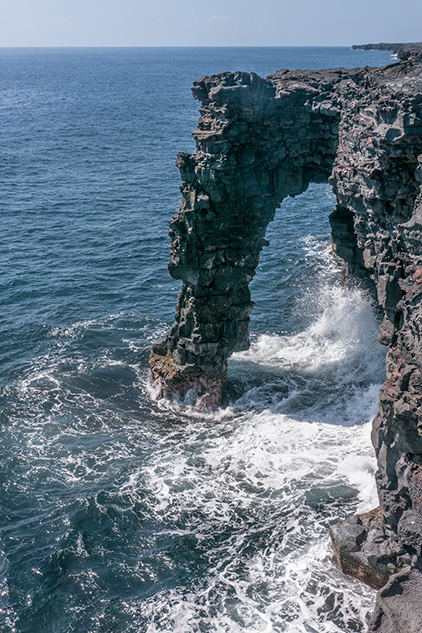
Near the current end of the Chain of Craters Road. This arch will succumb to the relentless battering of the Pacific Ocean.
Also near the end of the current Chain of Craters Highway was a short trail to some petroglyphs. Petroglyphs on this part of the Big Island are not very old, since Mauna Lea and Kīlauea have pretty much repaved everything at least once in the past 1,000 years.
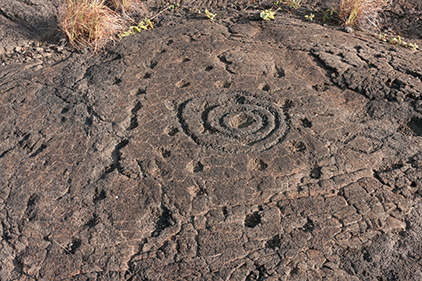
Hawaiian petroglyphs.
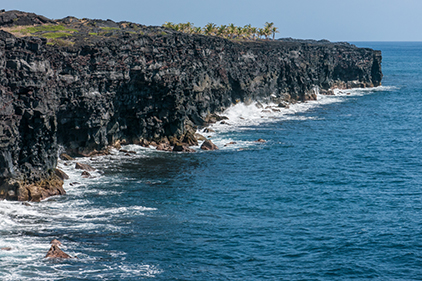
Lava tends to be pretty soft rock, so easily eroded, producing cliffs.
One thing I had not expected to see was Pele’s hair. The sample I saw in the Jaggar Museum (check out the photo), looked fragile, like yellowish fiberglass insulation. The unexpected turned real when I found that what I thought was bits of dried grass here and there in the pahoehoe were in fact long, straight fibers of Pele’s hair. They were everywhere, collected in protected nooks and crannies. Apparently they were thick enough that even fifty years of wind and rain hitting the Mauna Ulu lava flows has not reduced them all to tiny particles.
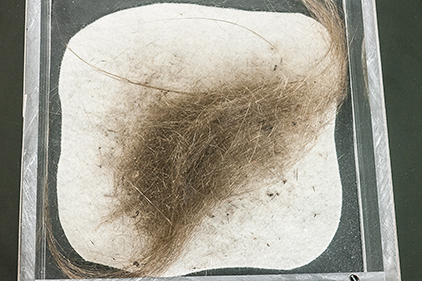
Fine strands of Pele’s hair in an exhibit at the Jaggar Museum in Hawaii Volcanoes National Park.
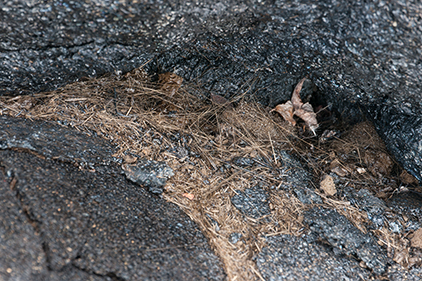
Looking like dried blades of grass and grass seeds, these are actually glassy fibers and shards of lava—Pele’s hair.
Different birds in a different part of the forest.
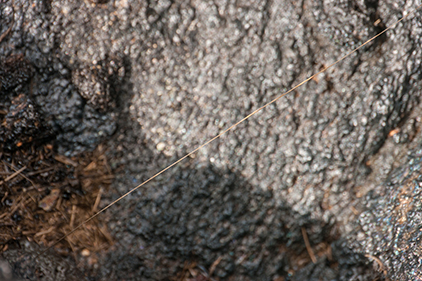
This straight fiber of Pele’s hair is about six inches long across the image. It was just lying there, supported on each end by rocks.
I was puzzled when I found something else in one of the lava flow nooks. It looked and felt like a sun rotted and hardened piece of foam, but it was not artificial. It was very light and would blow around if exposed to wind. I thought of it as “lava foam” until some web searching gave it a name—reticulite, which is a fancier word for lava foam.
It was fun geeking out on lava rocks.
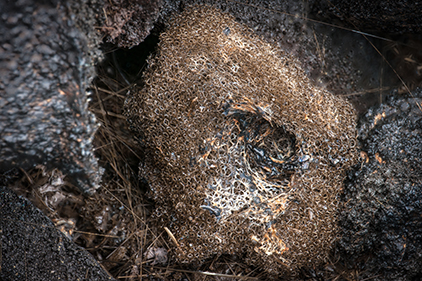
What I initially called “lava foam,” this is reticulite—lava rock that hardened when it was frothy with gas bubbles.
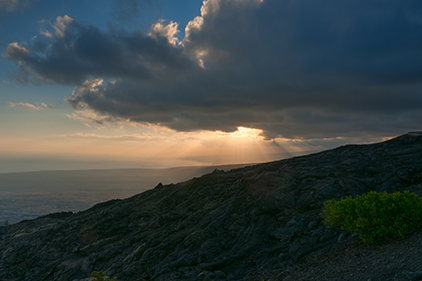
Clouds, the Hōlei Pali, and vog in the setting sun’s light.